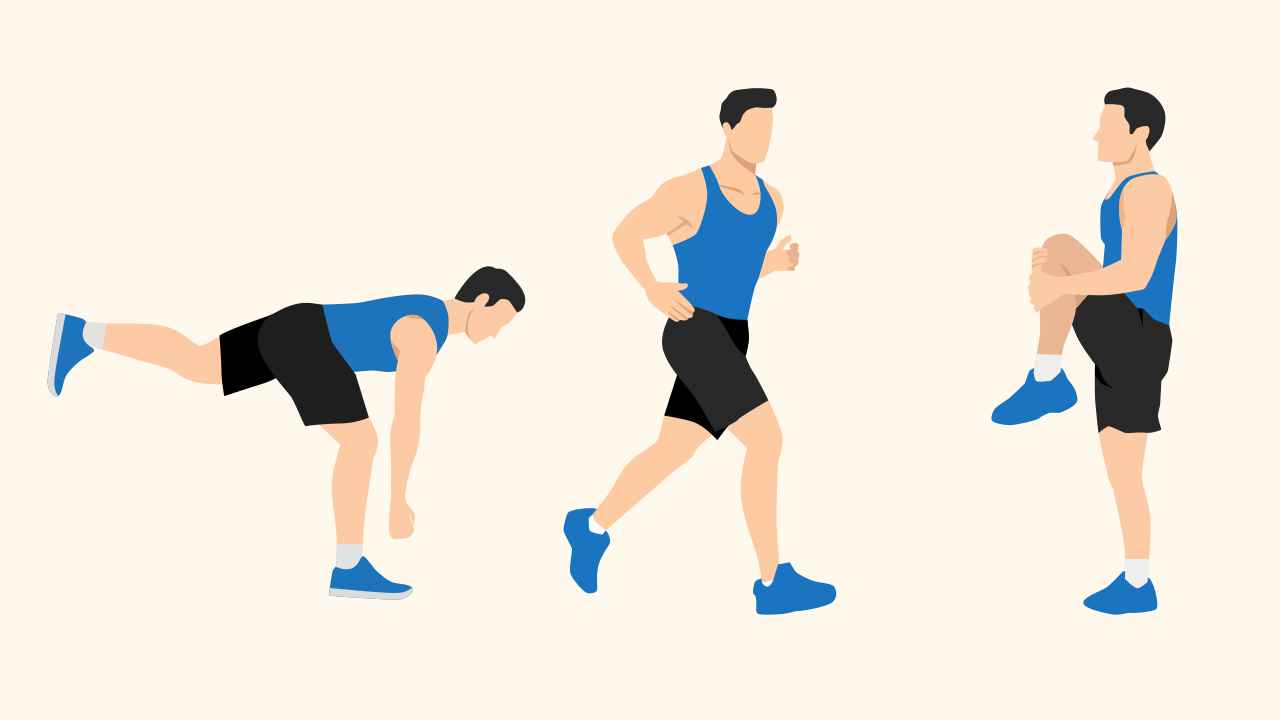
Balance Training for Runners: How Does It Help Performance

Runners tend to focus more on working on their endurance, flexibility and strength, and might sometimes forget about the importance of balance. Think about it — as children, most of us have had an active lifestyle with jumping, climbing and landing on one foot. We were developing our balance and stability with such movements without even being conscious of it. Now, running as a sport also demands balance because you are constantly landing on one foot with two to three times the weight of your entire body and then jumping on to the other foot. Lack of balance can not only lead to a fall, but also compromise the gait and increase the risk of injuries.
Balance and proprioception
To understand the science behind balance, let’s first understand the concept of proprioception. Proprioception is your body’s ability to move without thinking about your next step. It is a result of neuromuscular coordination and balance derived from specialised sensory nerve endings in your muscle, tendons and joints called proprioceptors, which let you know inherently where your centre of gravity and weight lie at any given moment. So, when you climb the stairs or kick a football, you can do it without being aware of the different body parts involved.
Balance, on the other hand, is the even distribution of one’s body weight so as to remain upright and steady without falling. Both balance and proprioception are important to maintain an upright posture without risking an injury.
Also watch: What Are the Major Muscle Groups Used while Running?
Why does balance matter for runners?
Running is a weight-bearing activity, which means that there is impact felt on alternate legs as they hit the ground, making it a balancing act for runners. Additionally, running on uneven surfaces, moving through traffic, maneuvering pedestrians, curves, and climbs on a course, or in some cases distractions that might require you to stop suddenly — all require balance and stability. Besides, running on a treadmill may easily throw you off if your attention span wavers from the belt movement. All of the above challenge a runner’s balance.
When you are running, the stance phase (when you land on one foot during a stride) involves not just stabilising the body on the narrow support base of your foot, but also requires you to transfer force and push off the ground for the next stride. If you have poor balance, the above support and force transfer may not happen efficiently
Also, when you stumble on an uneven surface or an obstacle, being able to control your body without risking a fall, is a function of how good your balance is. Along with strength training, incorporating balance training in your plan is equally important.
What is balance training?
Balance training pertains to the ability to maintain posture and movement while maintaining a support base for the body. This essentially involves keeping your joints and limbs aligned during movement. It is what keeps you from getting injured in sport and also improves performance.
Before starting balance training, you first need to find your baseline in order to determine how good or poor your sense of balance is. Standing on one leg for 30 secs is the first step. If you are able to manage this, the next step is to check if you can make arm movements in different directions while standing on the same foot. Lastly, doing all of this with your eyes closed can give you confidence about your balance.
How can you incorporate balance training into your routine?
Passive and active balance may be learned through static postures and flow exercises in workout domains such as yoga and Pilates. However, performing functional movements (that mimic running) while balancing on one foot, will enhance your ability more quickly. This involves doing your regular warm-up of leg swings or a butt stretch by bringing the knee to your chest without ‘falling off’ or the need to hold on to any support. Couple this with an unstable surface such as a cushion or Bosu trainer, and you will soon advance to the next level.
Running is for the most part, a single-plane unidirectional motion. Hence, when negotiating different surfaces and their unevenness, a runner may lack stability, and either lose balance or compensate for the lack of it by straining different muscles. This could lead to injury. There is also the aspect that lack of stability may compromise your gait. Balance is a complex combination of muscle strength and coordination. It is important to make balance training a part of the repertoire of workouts of your overall schedule.
References
1. Emery CA, Cassidy JD, Klassen TP, et al. Effectiveness of a home-based balance-training program in reducing sports-related injuries among healthy adolescents: a cluster randomized controlled trial. CMAJ 2005; 172: 749-54.
2. Zazulak BT, Hewett TE, Reeves NP, et al. The effects of core proprioception on knee injury: a prospective biomechanical-epidemiological study. Am J Sports Med 2007; 35: 368-73.














